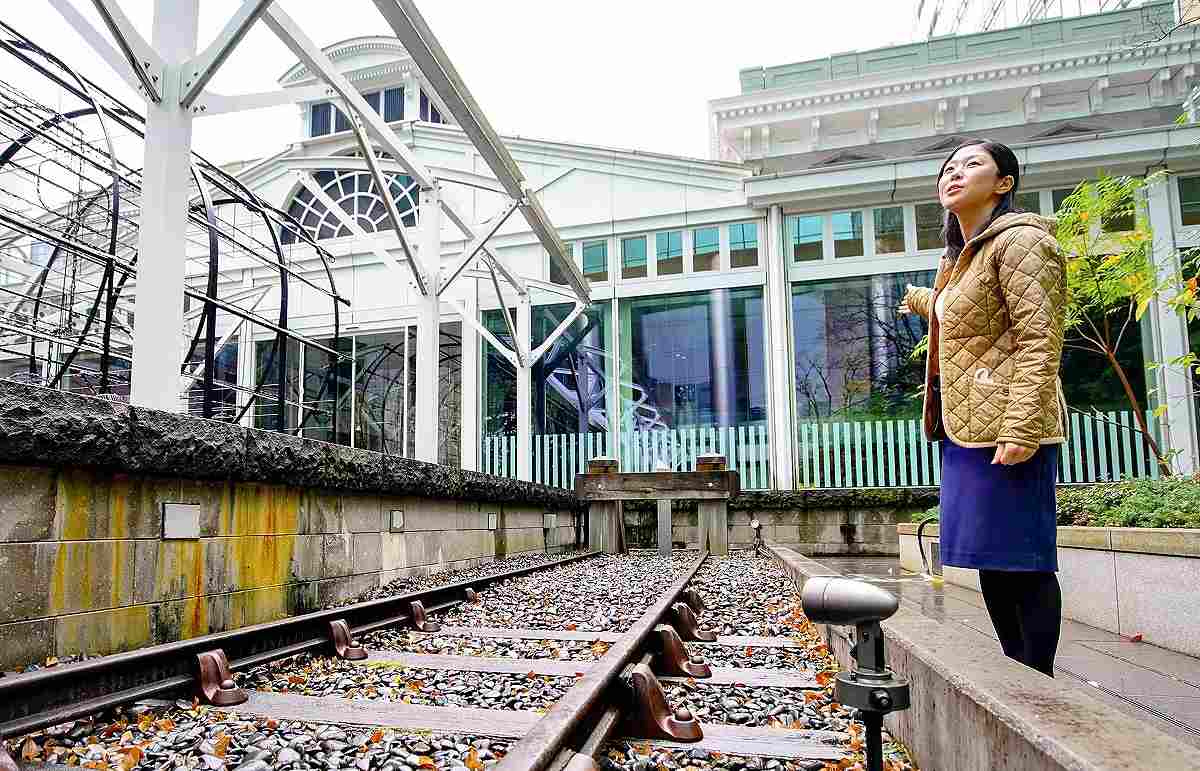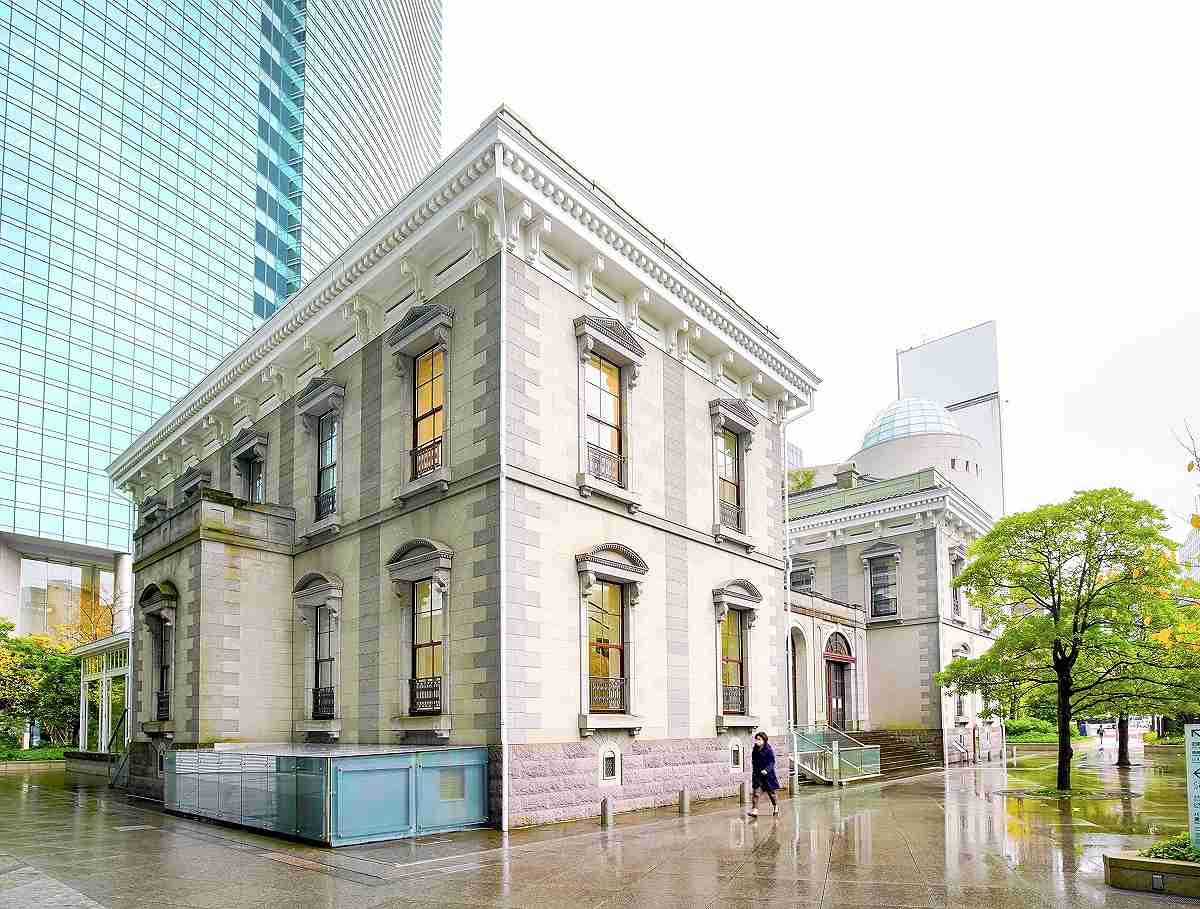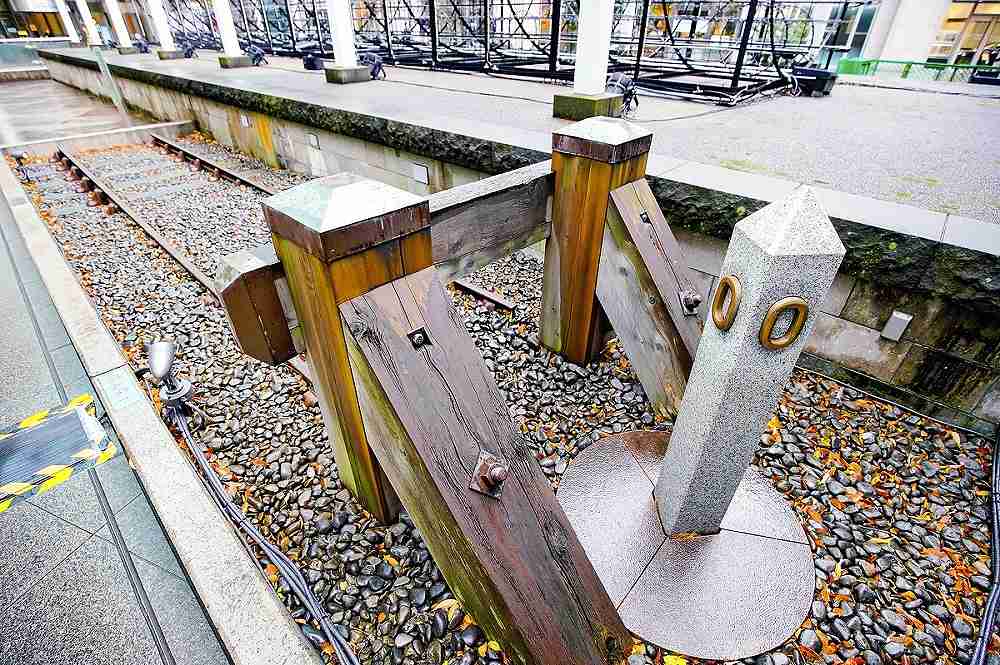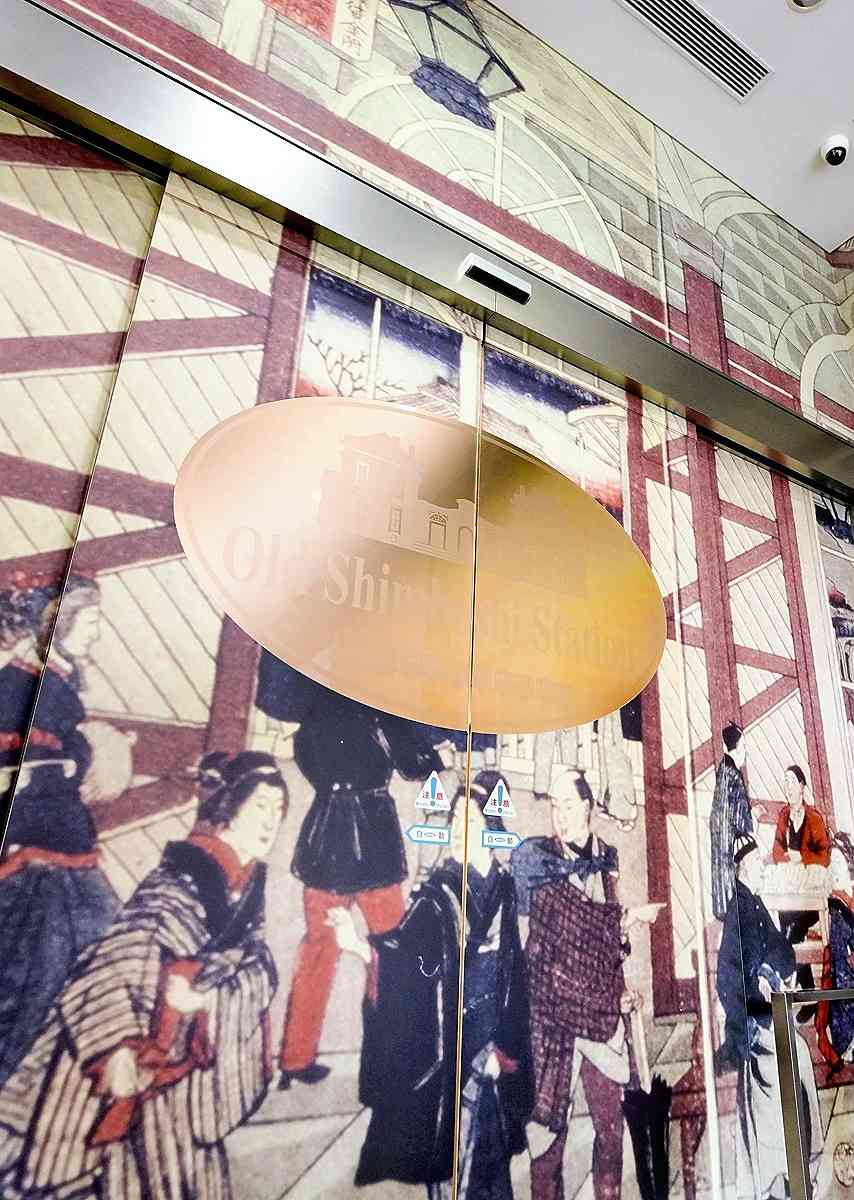
The reproduced building of the original Shimbashi Station is seen behind a re-created platform and tracks.
16:46 JST, January 19, 2021
“As the whistle is blown, my train is already leaving Shimbashi” is a phrase appearing at the beginning of an old railway song.
Shimbashi Station, established in 1872 in Tokyo, was the starting point of the nation’s first railway, which ran south to Yokohama (present-day JR Sakuragicho). A small exhibition building that retains the appearance of the original station has been re-created as the Old Shimbashi Station at the site where the terminus was located in the Shiodome district of Minato Ward, Tokyo, which nowadays is lined with skyscrapers.

A reproduction of the old Shimbashi Station building made of wood and stone, originally completed in December 1871
After departing the original Shimbashi Station, the steam locomotive would run along then-seaside tracks between Tamachi and Shinagawa stations, as well as between the Kanagawa and old Yokohama stations. The appearance of the train, which traveled the 29-kilometer route between Shimbashi and Yokohama in 53 minutes, must have made people marvel, because it used to take at least 10 hours on foot between the two points.
When Tokyo Station opened in 1914, the original Shimbashi Station gave up its title as the “front entrance of Tokyo.” Karasumori Station (present-day JR Shimbashi) was renamed Shimbashi Station, and the original Shimbashi Station was renamed Shiodome, and operated as a freight terminal until 1986.
Excavations that started in 1991 in connection with the redevelopment of the closed Shiodome Station site unearthed foundation stones for the original station building and remains of the platforms, among other relics.

A reproduced “zero-mile sign” indicating that the old Shimbashi Station was the starting station on the nation’s first railway.
The tracks and the “zero-mile sign,” showing that the original station was the starting point on the nation’s first railway, have been reproduced at the Old Shimbashi Station. The remains of the foundation stones, still in the ground, can be viewed through a glass pane, among other displays.
Tickets and kisha dobin — teapots used on trains — from the time of the old station’s opening are displayed in the exhibition room on the first floor of the facility.
Kisha dobin are said to have been originated from teapots made of Shigaraki ware and were used at Shizuoka Station in 1889. They spread all over the country together with ekiben — boxed lunches sold at train stations or aboard trains. Since they were regarded similarly to today’s plastic bottles, they were often thrown away on the spot after use. Therefore, signs are said to have been posted everywhere in the station urging people to observe good manners.
At the Old Shimbashi Station, visitors can also see a video of the old station and the Shiodome area. They can learn about changes in the area as well as the history of railway development, using chronological tables and maps.

A nishiki-e color print, reproduced on the door at the entrance of an exhibition room of the Old Shimbashi Station, depicts how it bustled with people dressed in Japanese and Western clothing at the time of its opening.
A nishiki-e color print depicting the image of men with topknots and women in Western clothes in front of the old Shimbashi Station at the time of its opening is reproduced on an automatic door at the entrance of an exhibition room on the second floor.
“The image shows that everyone became able to ride the same train regardless of their social status during the Edo period (1603-1867), if they paid the fare,” said Nao Baba, a curator of the East Japan Railway Culture Foundation, which manages the facility.
Old Shimbashi Station: 1-5-3 Higashi-Shimbashi, Minato-ku, Tokyo
"Society" POPULAR ARTICLE
-

M4.9 Earthquake Hits Tokyo, Neighboring Prefectures
-

M7.5 Earthquake Hits Northern Japan; Tsunami Waves Observed in Hokkaido, Aomori and Iwate Prefectures
-

Israeli Tourists Refused Accommodation at Hotel in Japan’s Nagano Pref., Prompting Protest by Israeli Embassy and Probe by Prefecture
-

Tsukiji Market Urges Tourists to Avoid Visiting in Year-End
-

M5.7 Earthquake Hits Japan’s Kumamoto Pref., Measuring Upper 5 Intensity, No Tsunami Expected
JN ACCESS RANKING
-

Keidanren Chairman Yoshinobu Tsutsui Visits Kashiwazaki-Kariwa Nuclear Power Plant; Inspects New Emergency Safety System
-

Imports of Rare Earths from China Facing Delays, May Be Caused by Deterioration of Japan-China Relations
-

University of Tokyo Professor Discusses Japanese Economic Security in Interview Ahead of Forum
-

Japan Pulls out of Vietnam Nuclear Project, Complicating Hanoi’s Power Plans
-

Govt Aims to Expand NISA Program Lineup, Abolish Age Restriction

















